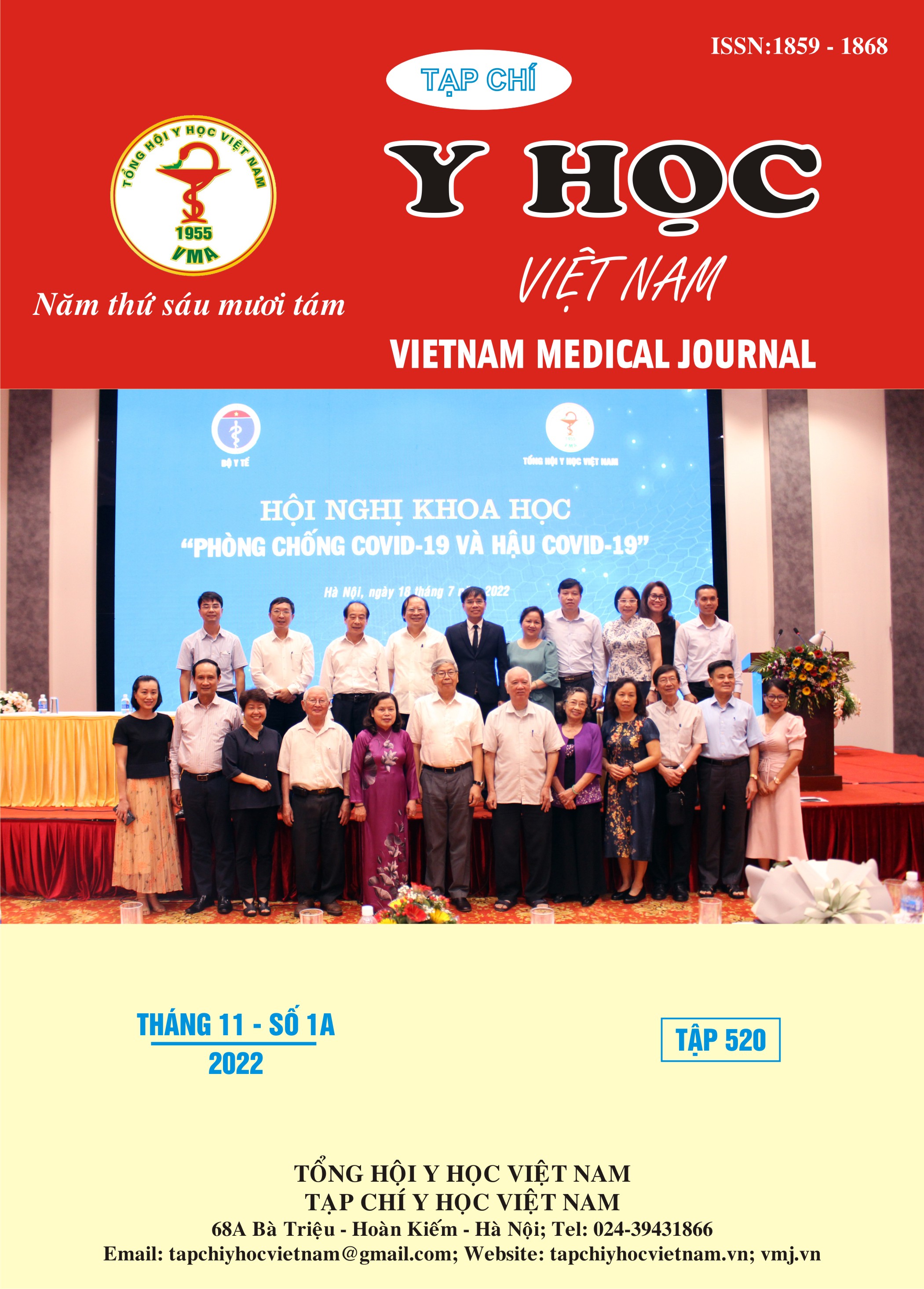KHẢO SÁT SỰ THAY ĐỔI NỒNG ĐỘ NT-PROBNP Ở BỆNH NHÂN SUY TIM BÉO PHÌ
Nội dung chính của bài viết
Tóm tắt
Đặt vấn đề: NT-proBNP là xét nghiệm dùng để chẩn đoán và đánh giá mức độ suy tim. Tình trạng thừa cân, béo phì ở bệnh nhân suy tim có thể làm thay đổi nồng độ NT-proBNP dẫn đến việc chẩn đoán và điều trị suy tim bị ảnh hưởng. Cần có nghiên cứu về ảnh hưởng của thừa cân béo, phì lên nồng độ NT-proBNP ở bệnh nhân suy tim. Mục tiêu: Mô tả sự thay đổi nồng độ NT-proBNP giữa 2 nhóm bệnh nhân suy tim thừa cân, béo phì và không béo phì. Phương pháp: Nghiên cứu hồi cứu, cắt ngang có phân tích thực hiện trên bệnh nhân suy tim nhập viện vào khoa tim mạch tại bệnh viện Đại học Y Dược thành phố Hồ Chí Minh từ 9/2018 đến 5/2022. Kết quả: 276 bệnh nhân được nhận vào nghiên cứu gồm 129 nam và 147 nữ. Nồng độ NT-proBNP ở nhóm bệnh nhân suy tim thừa cân béo phì và suy tim không béo phì lần lượt là 4933 (2112-11720) (pg/ml) và 3177 (1409-5927) (pg/ml) (p<0,001). Nồng độ NTproBNP theo giới trên nhóm thừa cân, béo phì ở nam là 2547 (1276-4574)(pg/ml) thấp hơn hơn nhóm không béo phì ở nam là 3427 (1796-9892) (pg/ml) (p=0,029). Nồng độ NT-proBNP theo giới nữ nhóm thừa cân, béo phì là 4039 (1414-8192) (pg/ml) và nữ nhóm không béo phì là 4498 (2672-16191)(pg/ml) (p<0.028). Sự khác biệt có ý nghĩa thống kê còn được thấy ở nồng độ NT-proBNP trong nội bộ nhóm thừa cân, béo phì giữa giới nam và nữ với (p=0,024). Nồng độ NT-proBNP theo tuổi trên nhóm thừa cân, béo phì ở độ tuổi từ 50 - 75 là 3151 (1575-6812) (pg/ml) và ≥ 75 là 3156 (1074-4975) (pg/ml) thấp hơn nhóm không béo phì ở độ tuổi từ 50 – 75 là 4988 (2066-10383) và ≥ 75 là 4343 (2435-16488) sự khác biệt này có ý nghĩa thống kê với p<0,05. Kết luận: Nồng độ NT-proBNP huyết tương ở bệnh nhân suy tim thừa cân béo phì thấp hơn ở bệnh nhân suy tim không béo phì theo giới và nhóm tuổi. Điều này có ý nghĩa trong việc điều chỉnh chẩn đoán và đánh giá mức độ suy tim của bệnh nhân cho phù hợp với tình trạng thừa cân béo phì của bệnh nhân.
Chi tiết bài viết
Từ khóa
NT-proBNP, suy tim, béo phì, dấu ấn sinh học
Tài liệu tham khảo
2. Alan S Go, Dariush Mozaffarian, Véronique L Roger, et al, (2014), "Executive summary: heart disease and stroke statistics--2014 update: a report from the American Heart Association", Circulation, 129 (3), pp. 399-410.
3. Global Initiative for Chronic Obstructive Lung Disease, (2011), Global strategy for the diagnosis, management, and prevention of chronic obstructive pulmonary disease, Global Initiative for Chronic Obstructive Lung Disease, pp.
4. Sandeep R Das, Mark H Drazner, Daniel L Dries, Gloria L Vega, et al, (2005), "Impact of body mass and body composition on circulating levels of natriuretic peptides: results from the Dallas Heart Study", Circulation, 112 (14), pp. pp. 2163-2168.
5. Tamara B Horwich, Michele A Hamilton, Gregg C Fonarow, (2006), "B-type natriuretic peptide levels in obese patients with advanced heart failure", J Am Coll Cardiol, 47 (1), pp. 85-90.
6. Vibhu Parcha, Nirav Patel, Rajat Kalra, et al, (2021), "Obesity and Serial NT-proBNP Levels in Guided Medical Therapy for Heart Failure With Reduced Ejection Fraction: Insights From the GUIDE-IT Trial", J Am Heart Assoc, 10 (7), pp. e018689.


